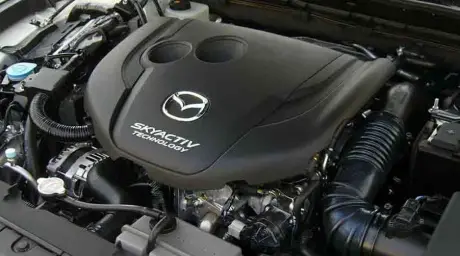
While Japanese gasoline engines are renowned for their exceptional durability, the same cannot be fully said for their diesel engines. A prime example of this is seen in the diesel engines from Toyota and Mazda, which have led a somewhat neglected existence in the European market over the years.
The consequence of this lukewarm approach was a series of issues, which in many cases also led to severe engine damage. We will clarify which specific engines are involved, what to look out for, and when improvements were in sight in this guide.
Toyota
To not miss the diesel trend around the turn of the millennium, Toyota swiftly developed the 2.0-liter diesel 2.0 D-4D, which debuted in the Toyota Avensis in 1999.
2.0 D-4D (RAV4, Avensis)

The 116 horsepower unit of the 1CD series is fundamentally durable, as evidenced by numerous examples with well over 310,685 miles on the clock. However, especially in the beginning, there were known problems with the injectors. The dual-mass flywheel, the turbocharger, and the EGR valve also caused occasional trouble.
The second generation of the 2.0 D-4D (1AD), introduced in 2006, is a complete redevelopment. Firstly, unlike its predecessor, the block was made from aluminum instead of cast iron. Secondly, the injection system was revised, reducing its susceptibility to issues. Moreover, the timing belt was replaced with a low-maintenance timing chain.
While the weaknesses of the predecessor were largely eliminated, new issues arose elsewhere - defective cylinder head gaskets in the 1AD are not uncommon, and the engine has a very unhealthy oil thirst. By the end of 2011, these teething problems were also rectified.
2.2 D-4D (RAV4, Avensis)
A larger and more powerful variant with a 2.2-liter displacement (2AD) was available from 2005, which not only had defective cylinder head gaskets but also occasionally hairline cracks in the engine block and cylinder head. Toyota addressed the problem, but it's assumed not all owners followed the service call.
1.4 D-4D (Yaris, Auris)
Toyota also wanted to gain a foothold in the small and compact car segment with its diesel engines and launched the 1.4 D-4D in 2001. Compared to the larger engines, the 1.4-liter does not falter, and with 90 horsepower, the small four-cylinder is also surprisingly agile.
Conclusion on D-4D
You're safe with the 1.4 D-4D, which is not only extremely durable but also inexpensive to repair if problems do occur. However, the 2.0-liter diesel 2.0 D-4D causes concern, and we even advise against older 2.2 D-4D models.
Mazda
Mazda was one of the first Japanese car manufacturers to hit European tastes with its diesel in 2002, becoming a serious competitor to Toyota in this segment.
2.0 MZR-CD (Mazda 6, Mazda 3)

The Commonrail Diesel 2.0 MZR-CD is essentially a solid engine with some minor problems, which have cumulatively led to several engine damages. A typical weak point is the oil strainer, which regularly becomes clogged and, in the worst case, can incapacitate the engine, as it simply cuts off the oil supply.
Experts have long been aware of this problem and have cleaned the oil strainer, but for many others, it was already too late. Other weak points include the injector fireguard seals, which become leaky over time, and a susceptible oil pump.
Frequent short trips also often lead to clogging of the diesel particulate filter (DPF). To regenerate the DPF, longer trips must be driven, which rarely occurs in city operation. Turning off the engine then leads to the regeneration phase being interrupted, and the unburnt fuel in the combustion chamber mixes with the engine oil. The result is a gradual oil dilution and an impending engine damage.
2.2 MZR-CD (Mazda 6, Mazda 3)
The second generation of the Mazda diesel was introduced in 2008 and was supposed to do everything better. Indeed, Mazda managed to eliminate some of the predecessor's weaknesses, but other problems became apparent in the process. For example, the timing chain of the 2.2 MZR-CD tends to stretch prematurely, often leading to severe engine damage. In addition, leaky injector fireguard seals and DPF issues remain a concern.
Overall, the engine can be considered quite successful, which also impresses with excellent driving performance: The 150 horsepower variant produces a proud 265 lb-ft of torque, and the 173 horsepower variant even manages 295 lb-ft – so there should be no lack of driving pleasure.
Skyactiv-D (Mazda 6, CX-3)
The current Mazda diesel is named Skyactiv-D and was introduced in 2014. In terms of reliability, the oldest models still struggle with the timing chain, and some unfortunate owners have had to deal with worn camshafts and turbocharger damage. By around the end of 2015, Mazda had also rectified these defects.
Conclusion on MZR-CD and Skyactiv-D
The Mazda diesel is generally a good choice when one's driving profile is suitable for a diesel. Frequent short trips severely punish the MZR-CD, leaving the owner stranded unless they are aware of the specific problems or generally skimp on maintenance. Things became more relaxed with the Skyactiv-D, although the year of manufacture should still be taken into account.
Same articles

Understanding Vehicle Inspection and Verification Services: Why They Matter for Every Driver
GuidesVehicle inspection and verification services are an essential but often overlooked part of keeping roads safe and cars legally compliant. Most people only think about inspections when it’s...
KLIFEX Brand Overview: High-Quality Automotive Repair Kits for Affordable Repairs
GuidesThe automotive aftermarket has long needed solutions that combine reliability, durability, and affordability. Many car enthusiasts and services are looking for a way...
Fast, Reliable Vehicle Emissions & Inspection Services Made Simple
GuidesFast, reliable emissions and inspection services are essential for keeping vehicles road-ready, compliant with environmental regulations, and safe for daily driving. If you’re looking for quick...

